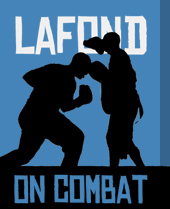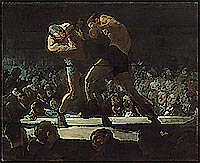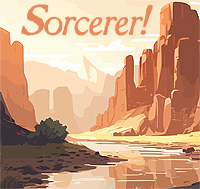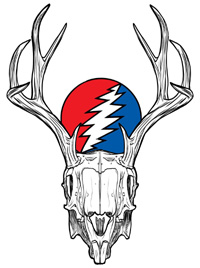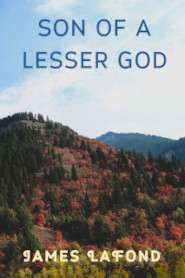You have seen Chuck Liddell, demonstrating ancient boxing techniques, and Rashad Evans demonstrating ancient MMA techniques on Spike TV's Deadliest Warrior. But have you wondered just how different life would be for you as a fighter in the times of Achilles, Alexander, Julius Caesar, or even Saint Paul?
Note: All Greek and Latin terms are translated. Only the names of individuals and deities are spelled according to their ancient pronunciation, with their translation in brackets.
Warrior-Excellence
Every ancient Greek boy became involved in combat sports in order to develop and display "Warrior-Excellence". Whether he was destined to be a potter, citizen soldier, mercenary captain or philosopher, every ancient Greek-speaker aspired to these warrior qualities as a prerequisite for manhood, and citizenship. This mind-set inspired the ruling class and officer corps of the Greco-Roman world from 776 B.C. until 400 A.D.
The Naked Exercises
The naked exercises took place at the "naked-training-center" or gymnasium.
The naked exercises were broken down into two broad categories. The supporting aspect was "contest-preparation" (agonistics) from which the English term agony is derived. The more public aspect was "prize-seeking", the ancient Greek word for which was athletics, and has been retained in modern English to designate any physical contest, from golf to MMA. To be an ancient athlete was to be a "prize-seeker".
All naked exercises were to be conducted naked, in an effort to toughen the young men, and humiliate those with poor physiques into improving their physical conditioning. This was also done to clearly differentiate sporting arts from war arts, which were conducted in clothing and armor.
Required equipment consisted of olive oil to protect the skin and make a wrestler hard to hold onto, a string to tie the foreskin of the penis over the head, and a scrapper to clean off with. The actual sports were limited to track and field events: running, jumping, stone throwing and javelin throwing; and the three combat sports described below.
There were no team sports, and no ball sports. There were recreational games that groups of people played with balls. These were sometimes co-ed affairs, and were never regarded as competitive undertakings. Competition was for the individual. Ball games were used to teach cooperation and for enjoyment, much like modern pool and beach activities. This is a huge factor in understanding the popularity of fighters: there was no equivalent of the NFL, NBA, MLB, NHL, etc. There was also no events equivalent to tennis, golf, extreme sports, soccer, rugby, etc. The only athletes were fighters! Horse and chariot racing was popular. But the contestants were the rich owners sitting on the sideline. The jockey or driver was just a possession like the horse or chariot.
The Hand-struggling Ground
Within, next to, or simply associated with, the gymnasium, was a large square building. This facility, with an open courtyard, surrounded by a covered track, which was in turn surrounded by various club rooms, dressing rooms, supply rooms and training chambers, was named after the goddess of wrestling Palaestra. This was also the shrine to her father Hermes, god of contests, travelers - most athletes were travelers - and escort of souls. This was a combination: martial-arts-school; church; militia training center; men's club, and boy's club.
The perimeter rooms included rooms for punching apparatus, and even a place for young men to bring dogs and cats to fight for wagers on leashes. The courtyard itself included a distinctive feature: "the sands" or "raked-earth", were the standup arts were practiced. The facility also had a shallow pit filled with a mixture of mud and oil, in which the most serious MMA fighters would hone their ground-fighting skills.
Competition
Competitions were usually held on a raked portion of a race track. This would be similar to fighting at second base on a baseball diamond. Horse manure was raked off along with the sharper stones. The bottom of a fighter's feet had to be extremely tough to tolerate this. Modern fighters who have experimented with this have sometimes tapped to stone-bruises on their feet. There were three age/weight classes: boy/bantam; youth/feather; man/light thru super-heavyweight. Large youths and small men were required to fight in the open men's class. All contests were randomly drawn single-elimination tournaments with byes.
Hand-struggle
Wrestling was the first art a boy learned, at between 5 and 10 years old, depending on his home town tradition. This was the distinctive ancient form of Greco-Roman wrestling, which was only distantly related to the modern version. Two wrestlers would lock-up in a clinch, and then attempt to score a clean throw on the other. A clean throw was scored when both shoulders hit the ground without either contestant going to a knee, or the thrower losing his footing. Three clean throws would win the bout. One could also win via standing submission. Finger-breaking was allowed, although biting, striking and gouging were not.
The hand-struggle was the foundation art of ancient MMA and also of the heavy infantryman, who fought in closely packed ranks, and for whom falling in battle was sure death. This art was about staying on your feet. Some famous wrestlers and MMA fighters were credited with winning battles just by their presence in the front rank. Imagine facing Brock Lesnar with a 20 pound bronze shield strapped to his arm!
Fist-Fighting
Boxing was the second fighting art a boy learned. This would begin at about 12-years-old. Training consisted mostly of sparring with leather wraps or (after 50 B.C.) gloves. Competition hand gear was either the leather hand-strap or (after 350 B.C.) a complex leather gauntlet. In gladiatorial events (30 B.C. to 250 A.D.), there was some use of more deadly hand-gear, but not at the "sacred contests" sanctioned by the priests of Hermes.
Bouts consisted of a single un-timed round. The bout ended when one fighter retreated out of the un-roped circle, was incapacitated, or when he raised his index finger in submission. There were no ropes to lay on, and no corner to put your man in.
There were four fouls: kicking, clinching (zero tolerance, see officiating below), biting and gouging. A fighter was allowed to stand over his opponent and rain down blows. He was also permitted to spear the eyes with his finger tips and could punch freely to the unprotected groin. It may be that the foreskin string did more than keep sand from entering the urethra. It would encourage the penis to hang down in front of the more sensitive testicles, and also discourage a potentially catastrophic erection.
All-Power-Thing
MMA was for older youths and men. It was called the all-power-thing, and was a pure submission art; which meant it could be won like a sumo match, by forcing a man to step out. Imagine not having a cage or ropes to work up against: no army of little Japanese refs to keep you in the ring; nothing but your will to keep you on the raked earth. The body oil would certainly affect the submission game. There were only two fouls: biting and gouging. Of course the Spartans permitted these, but they never fielded a decent team of all-power-fighters.
There was no assumption that MMA techniques would be used on the battlefield. The lethal close-range arsenal of the ancient battlefield made it less likely that unarmed striking and grappling would be used in battle, than on the modern battlefield, dominated by long range weapons. The value the ancients attached to victory in all-power-fighting was the proven adaptability of the individual when under the extreme pressure of all-out combat. More all-power-fighters served in leadership roles in the military and diplomatic field than wrestlers and boxers combined.
Don't forget though, that every boxer had been a wrestler, and that every all-power-fighter had been a boxer and a wrestler. The ancients identified the event with the person, not the person with the event. Milo was not "the wrestler", but "he who had won in wrestling". In this area there is a great gulf between the ancient and modern mind-set.
In the ancient MMA world the victor in a sacred all-power-contest was not just a celebrity, but a celebration of self-made manhood, and an example of divine favor. No one was believed capable of winning one of these contests without being blessed.
Officiating
The figure who has it best on the ancient athletic scene was the official. He was a combination referee/judge/priest, and was known as a "rod-bearer". He dressed in a purple robe that came down to the thighs. He also carried a long forked willow-stick. There were only two penalties for fouls in ancient combat sports. The standard penalty was for the rod-bearer to beat the offending fighter across the back, with his nasty forked stick, until the fighter stopped committing the foul! The second, more severe penalty, was disqualification and fines for offenses like trash-talking, and for fouls that resulted in the death of your opponent. These officials actually barred the greatest boxer of all time, Theogenes (God-born) from boxing in the Olympics, and fined him a hefty sum, because he was thought to have acted arrogantly before the gods. Imagine if Dana White got to clobber trash-talkers and poor sportsmen with a nine-iron at his press conferences!
Fortune
Only the top athletes who won multiple sacred contests, or swept the circuit, retired to a quiet life. Many of these men went on to meet their end in wars or duels, or even by accident or execution. Very few made fighting as a wrestler, boxer or mixed-martial-artist an actual career. For most it was more like a brutal period of scholastic sports in which only the most valuable player got paid& - and he got it all! The tournaments were winner-takes all, with nothing but a farewell feast for a consolation prize.
Among the many dozens of epitaphs recounting the feats of ancient fighters, not one, mentions a second place finish. In the ancient Olympics there was no silver or bronze. There was only the victor, and those he defeated.
Fame
A handful of wrestlers became famous for feats of strength and gluttony, and a few for acts of heroism on the battlefield. Many MMA stars went on to serve their nations as civic and military leaders. The boxers though, are an odd case. More of these men were famous than the others, but none distinguished themselves as military men or politicians.
On the other hand, two ancient boxers Glaukos (Grey-fish) and Ethymus (Grace-speaker) actually came to be worshipped as heroes, and one, Theogenes, as a god! Theogenes was worshipped for at least 600 years, and his stories are still to be found in rare book collections 2,450 years after his death.


